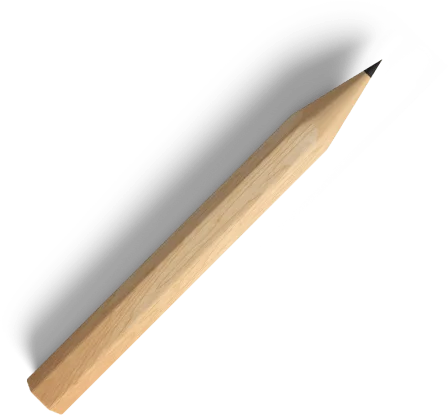When it comes to telling someone’s life story, accuracy and authenticity matter. That’s why a biography writer doesn’t just rely on hearsay or surface-level facts. Instead, they use primary sources—the building blocks of a truthful and true story. These sources provide a firsthand glimpse into the subject’s world, capturing real voices, emotions, and moments that shaped a life.
Whether you’re working with a professional biography writer or planning to become a professional bio writer yourself, understanding how to use and identify primary sources is essential for crafting a credible and memorable biography.
Table of Contents
Toggle- What Are Primary Sources in Biography Writing?
- Why Primary Sources Are Crucial for Biography Writers
- Types of Primary Sources Biography Writers Use
- How Biography Writers Use Primary Sources: A Step-by-Step Process
- Challenges Biography Writers Face with Primary Sources
- When a Biography Itself Becomes a Primary Source
- The Role of a Professional Biography Writer
- FAQs
- Conclusion
What Are Primary Sources in Biography Writing?
A primary source is any original document, material, or evidence created during the lifetime of the person being written about. It’s not a summary or a retelling—it’s the real thing. Primary sources come directly from the subject or from those who had a direct connection with them.
Examples include:
- Personal journals or diaries
- Letters or emails
- Recorded interviews
- Legal records and certificates
- Social media posts
- Photographs and home videos
By incorporating these firsthand materials, an experienced writer uses their creative writing skills to create content that’s not only accurate but also emotionally resonant and engaging.
Why Primary Sources Are Crucial for Biography Writers
Primary sources are the core of biographical writing for several important reasons:
- They preserve the subject’s voice: Quotes, letters, and journal entries allow the subject to speak directly to the reader.
- They increase credibility: Readers are more likely to trust a biography backed by authentic evidence.
- They capture real emotion: Documents from the subject’s own life reveal their true feelings and thoughts.
- They offer factual clarity: Legal and official documents support accurate timelines and events.
A professional biography writer carefully selects, analyzes, and incorporates primary sources to add depth and dimension to the story.
Types of Primary Sources Biography Writers Use
Primary sources vary depending on the subject’s background, time period, and availability of information. Here are the most commonly used types, which can also be useful when creating a bio generator to accurately capture key details:
Personal Writings
- Journals and Diaries: Offer private reflections, daily routines, and emotional context.
- Letters and Emails: Provide correspondence with family, friends, or colleagues that reflect the subject’s values and voice.
Interviews
When possible, writers interview the subject directly. If the person is deceased, they speak with relatives, close friends, or professional contacts who had a strong relationship with them. These conversations help shape the biography’s writing style, ensuring it authentically reflects the subject’s voice and personality.
Legal and Public Records
- Birth and death certificates
- Marriage licenses
- Military or academic records
- Business contracts and ownership documents
These sources help confirm life events, dates, and affiliations.
Photos and Videos
Visual materials help readers imagine scenes and understand the subject’s personality, relationships, and lifestyle.
Social Media and Blogs
Modern biography writers often use Facebook posts, tweets, or blog entries to capture the subject’s personal thoughts, humor, and everyday life in their own words.
How Biography Writers Use Primary Sources: A Step-by-Step Process
Writing a biography is more than collecting facts it’s a detailed process. Here’s how a professional bio writer typically uses primary sources from start to finish:
Step 1: Identify All Possible Sources
Writers begin by researching what materials exist. If the subject is alive, they request personal documents, review their track record through career highlights or achievements, or set up interviews. If not, they locate public archives, digital footprints, or family-held items that reflect the subject’s life and legacy.
Step 2: Evaluate Each Source for Use
Not every document is usable. Writers check for:
- Authenticity
- Relevance to the story
- Ethical permission to use it
Step 3: Gather Context
Understanding the background of each source is key. Writers look into the setting, timeframe, and motivation behind the material—just as they would when crafting detailed author bios that require context and clarity to resonate with readers.
Step 4: Organize Sources by Theme or Timeline
This helps structure the biography in a logical and emotionally compelling way. Events are grouped by chapter, period, or topic.
Step 5: Integrate Sources into the Narrative
A skilled professional biography writer weaves direct quotes, excerpts, or descriptions from the sources into the story, allowing the facts and voices to flow naturally within the plot.
Challenges Biography Writers Face with Primary Sources
While primary sources are essential, they come with unique challenges:
- Incomplete Records: Sometimes diaries or letters are missing, damaged, or vague.
- Bias in Sources: A letter or memory may reflect personal bias, requiring the writer to cross-check for accuracy.
- Privacy Concerns: Writers must handle sensitive information respectfully, especially if the subject or their family is still living.
- Access Restrictions: Some archives or institutions may limit access to key documents.
A professional bio writer knows how to navigate these issues with ethical care and expert judgment.
When a Biography Itself Becomes a Primary Source
Interestingly, while biographies are usually secondary sources, they can become primary in certain research contexts.
For example:
- A biography written by someone close to the subject (like a spouse or friend) may include primary content.
- If historians study how someone was portrayed during a specific era, earlier biographies become part of the record.
- Memoirs and autobiographies written by the subject themselves are considered primary sources.
Understanding this distinction helps biography writers and researchers use materials appropriately.
The Role of a Professional Biography Writer
Hiring a professional biography writer ensures that primary sources are not only found but also properly understood and used. These writers:
- Know how to fact-check information
- Preserve the tone and voice of the subject
- Create a readable and engaging narrative
- Respect privacy and legal boundaries
- Balance emotional impact with objective truth
Whether writing a legacy book, a career memoir, or a family history, biography writers turn raw materials into a captivating story that lasts for generations.
FAQs
What qualifies as a primary source in biography writing?
A primary source is original material such as letters, diaries, legal records, interviews, photos, or social media content created during the subject’s life. These authentic materials are especially valuable not only for biography writers but also for job seekers looking to highlight real achievements and personal history in their professional bios.
Is a biography a primary or secondary source?
Typically, a biography is a secondary source. However, parts of it like direct letters or transcripts—can be considered primary sources.
Do professional bio writers always use interviews?
Not always. If interviews aren’t possible, writers rely on personal writings, public records, and other existing primary sources.
Can social media be considered a primary source?
Yes. Social media posts, blogs, and videos can offer genuine insights, especially in modern biographies. These sources, including social media profiles, must be verified for authenticity to ensure the portrayal is accurate and trustworthy.
What if no primary sources are available?
In such cases, writers use trusted secondary sources, but they note the limitations. A professional biography writer will avoid speculation unless clearly identified as such.
Conclusion
A meaningful biography doesn’t come from guesswork it comes from truth, and that truth lives in primary sources. Whether you’re writing your own story or hiring a biography writer, knowing how to identify and use these sources makes all the difference.
Primary documents like letters, interviews, journals, and public records give a biography its foundation. When used with care and context, these sources help create compelling narratives that are both accurate and unforgettable turning life stories into beautiful books that readers can cherish for years. If you’re ready to preserve your story or honor someone else’s legacy, a professional bio writer can guide you through the process ensuring the final piece is a compelling story

